The ASUS ZenBook 3 Review: A Convincing Case for Quad Core Thin & Light Laptops
by Brett Howse on November 22, 2017 8:00 AM EST- Posted in
- Laptops
- Asus
- Zenbook
- Core 8th Gen
- Kaby Lake Refresh
Display Analysis
ASUS has gone fairly conservative with the display options for the ZenBook 3, as the only display choice as a 1920x1080 14-inch panel. It’s not low resolution by any means, with a 157 pixel-per-inch density, but compared to the UHD offerings, it seems like it is. Still, in a 14-inch laptop, it’s a reasonable resolution, and will hopefully pay dividends when we get to battery life. It’s still great to see a 14-inch panel in a laptop of this size, and the slim bezels help out here.
ASUS has targeted 100% of the sRGB gamut, and we’ll see how they did shortly. By not going with a wider gamut display, they don’t need to deal with the shortcomings of Windows in terms of color management.
The display features a Corning Gorilla Glass 5 cover, which should help prevent damage, but there’s no touch available. There’s also no support for a pen. It would be nice to see a touch option, even if not everyone would use it, but for traditional laptop functions, you can get by with the Precision touchpad.
To test display accuracy and performance, we use SpectraCal’s CalMAN suite, along with an X-Rite i1DisplayPro colorimeter for brightness and contrast measurements, and an X-Rite i1Pro2 spectrophotometer for color accuracy.
Brightness and Contrast

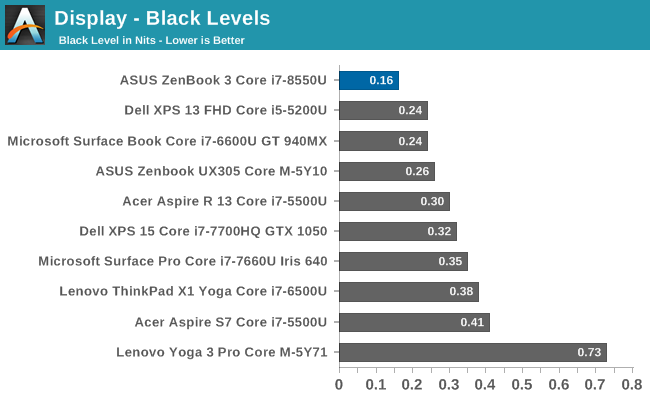
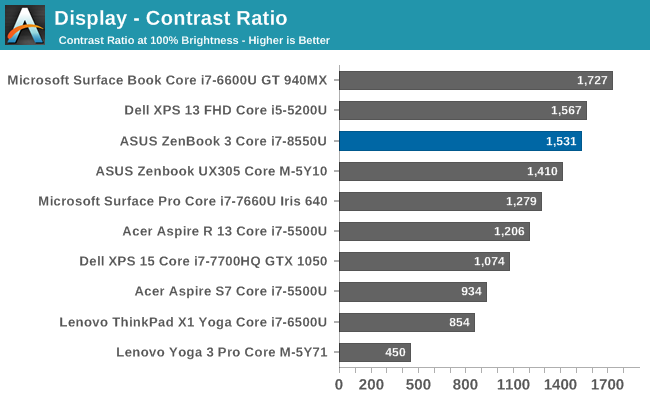
The ZenBook 3 doesn’t offer a very bright display, and would struggle to be used outdoors or in bright sunlight. It does offer great contrast though, coming in near the top of the list in that department. On the bright side, it can get fairly dim, with a minimum brightness of just 13 nits.
Grayscale

Testing the grayscale demonstrates some immediate issues with the display. The gamma is far from the ideal 2.2, and the blue levels creep up with brighter whites, while the reds drop off, resulting in a very cool display. The overall average dE isn’t terrible, but ASUS has never calibrated their laptop displays, and clearly they haven't started with the ZenBook 3.
Gamut
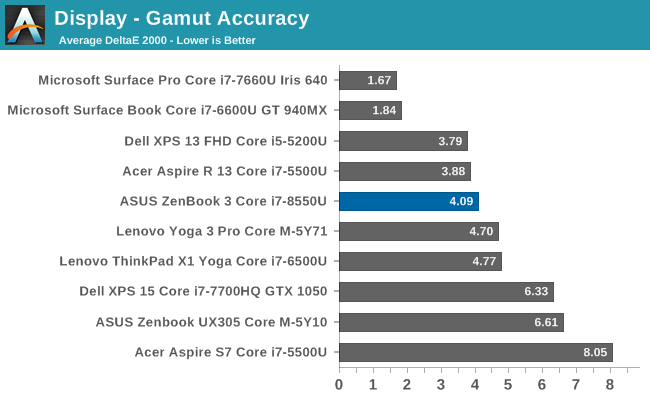
Coming from the grayscale results, it’s not a surprise to see that the blue levels are oversaturated on this display, with the 100% blue values well outside the sRGB range.
Saturation
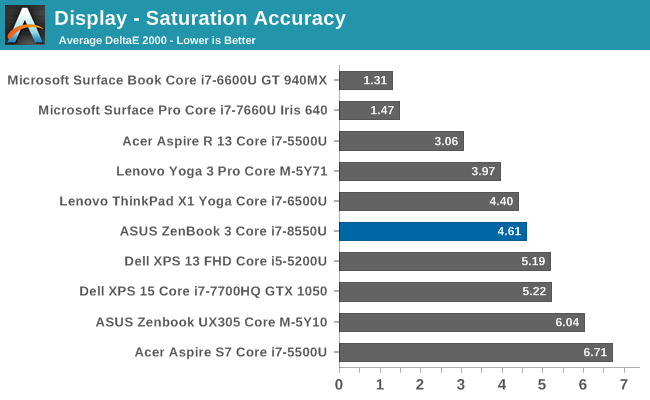
Our saturation sweeps show that all of the primaries are not quite where they should be, which drag the secondary colors out as well. The overall error level isn’t massive, but on a high cost device, there’s not a great reason to see the lack of any work done on color accuracy.
Gretag Macbeth
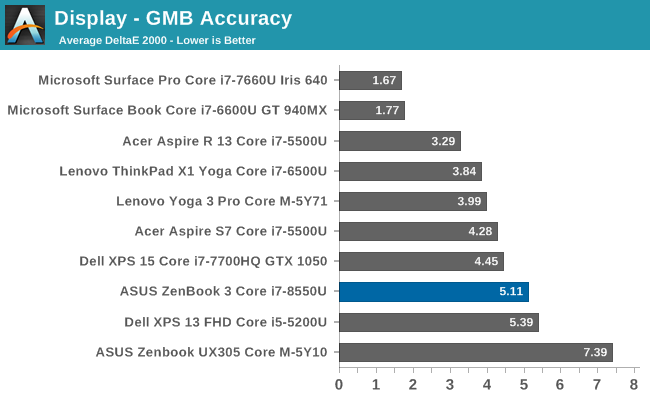
The Gretag Macbeth test covers a wide range of colors, and can show errors with colors such as flesh tones, even if the primary and secondary colors are not too bad, and that’s the case here. The overall error level average isn’t terrible, but on a premium device you should expect better.
This image shows the relative color error levels that you’d see on this device, with the displayed color on the top, and the correct color on the bottom. Your own display may impact these results though if it isn’t accurate, which is why this is only a relative difference.
Display Conclusion
ASUS has never been a company that has done any sort of color calibration on their displays, and that is clearly the case here again. On a low-cost device, you can overlook this, but some of the competition at this level does do individual calibration on their devices. If you’re after a notebook just for office tasks, these color errors will only be an annoyance, but if you’re after something to edit video or photography, you should likely look elsewhere.


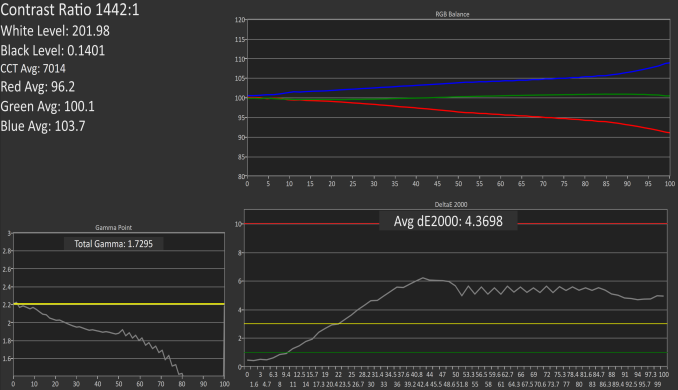
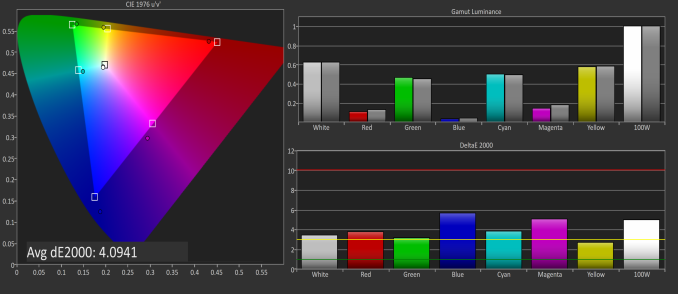
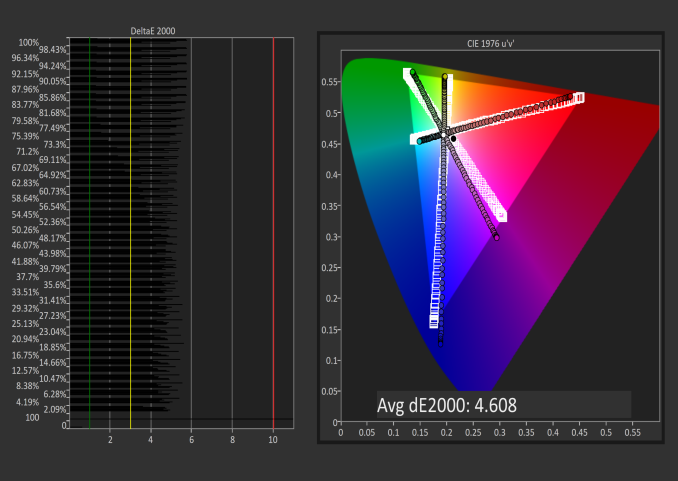
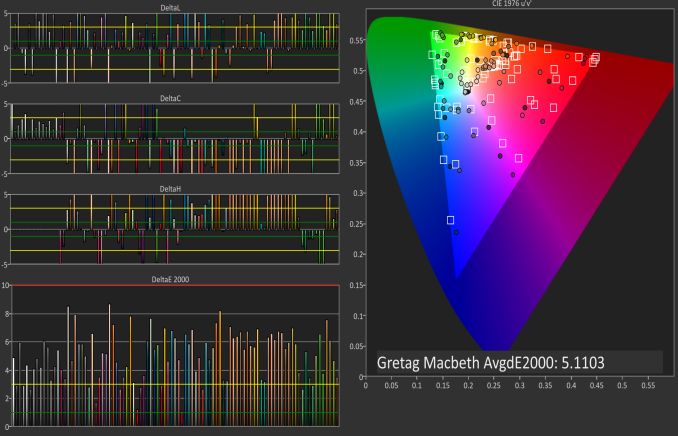









55 Comments
View All Comments
lefty2 - Wednesday, November 22, 2017 - link
The Cinebench multithread score look very weak. Only 497. The Ryzen 2700U scores 707Dr. Swag - Wednesday, November 22, 2017 - link
When it's allowed to turbo to the max, that is. If you put it in a laptop where you're more thermal and power constrained it's gonna give similar performance to this.If you look here it's only scoring 550 or so
https://images.anandtech.com/doci/11964/amd_ryzen_...
The 700 number was definitely with good cooling and maybe even the CPU set to the 25w mode. To achieve over 700 the CPU would need to be boosting to 3.3 ish ghz which is not reasonable to see in a laptop.
lefty2 - Wednesday, November 22, 2017 - link
(Sorry, posted this wrong)The 707 score is for a 15w laptop. Also, some redditors benchmarked the envy x360, which has a ryzen 5 2500u, that scored 577
neblogai - Wednesday, November 22, 2017 - link
Did Anandtech run Cinebench on Asus a single time, or in long loop? Did not see the answer when fast-reading the article. Ryzen Mobile in HP x360 with 2500U scored up to 614 for users in a single run, and AMD showed ~550 to be expected in continuous load at 25W. However- this Asus is a laptop weighing only half of what HP x360 weighs, thus lower cTDP/shorter boost time is reasonable.DanNeely - Wednesday, November 22, 2017 - link
Not sure, but in the power analysis section of the article it stated that after an initial burst the laptop dropped its CPU power down to 15W; so falling behind a 25W system is only to be expected. The graph in that section's bobbing up and down on temp/clock speed/etc suggests it was run long enough to reach steady state at least.lefty2 - Wednesday, November 22, 2017 - link
It's a pity no review site wants to buy a Envy x360 and benchmark it properly. We could lay this to rest thenRyan Smith - Wednesday, November 22, 2017 - link
Our Envy is on its way.=)lefty2 - Wednesday, November 22, 2017 - link
Excellent!jjj - Thursday, November 23, 2017 - link
Hope you guys spend a bit of extra time on power (for just the RR SoC), it's a possible weak point given how little such data AMD shared.Krysto - Wednesday, November 22, 2017 - link
And how do we know this isn't this laptop's "peak performance", too? Maybe Intel's chip actually drops down to a score of 300 after it throttles...